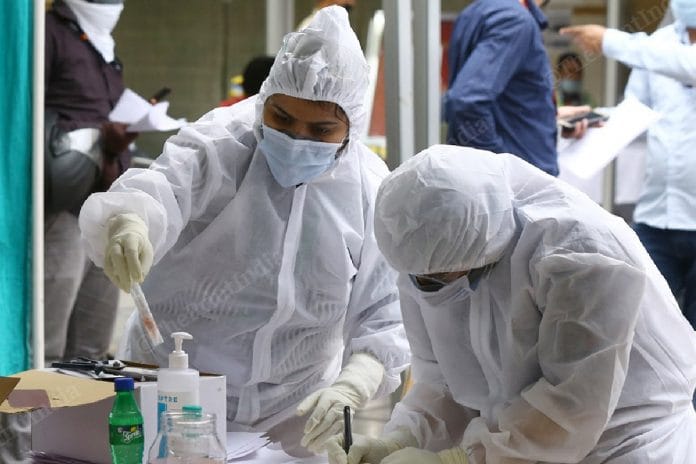New Delhi: “Influenza A subtype H3N2 is the major cause of current respiratory illness. ICMR-DHR (Department of Health Research) established pan respiratory virus surveillance across 30 VRLDs (Viral research and diagnostic laboratories),” said the Indian Council of Medical Research, linking the recent flare-up of respiratory illness and flu to the H3N2 virus.
About half of all inpatients, admitted for severe acute respiratory infections (SARI) as well as outpatients, being treated for influenza-like illness, were found to have influenza A H3N2, said ICMR Friday, adding that this subtype appears to cause more hospitalisations than others.
Currently, there is a surge in cases of H3N2 influenza. Such cases are being reported in numbers higher than those of H1N1 (the virus behind 2009’s Swine Flu onset and the Spanish flu of 1918), said Dr. Arjun Dang, CEO of the capital’s Dr. Dang Labs.
Among hospitalised patients, 92 per cent had presented with fever, about 86 per cent with a cough, and 27 per cent with breathlessness, 16 per cent showed symptoms of wheezing, said the ICMR. Demonstrating more severe symptoms, a further 16 per cent presented with clinical signs of pneumonia and 6 per cent had seizures, the apex body for biomedical research added.
The ICMR said 10 per cent needed oxygen, and 7 per cent required ICU care. Reports say that the virus has been in circulation for the last two to three months. A surveillance dashboard is available on the ICMR.
Also Read: Indian healthcare tasted the medicine of public-private partnership. Don’t let it go to waste
Weather, pollution leading to surge in cases
“The typical symptoms include high-grade fever for two-three days, body ache and headache, throat irritation, and a majorly persistent cough lasting for two weeks,” Sushila Kataria, senior director of Internal Medicine at Medanta, told news agency IANS.
According to a report, Primus Hospital in Delhi’s Chanakyapuri reported a 90 per cent patient surge in OPD cases with viral infections in the last two to three months.
The higher transmission of the flu virus is being caused by current climatic conditions. The changing weather, pollution also plays a hand in multiplying the number of patients impacted by viral infections, said the report, adding that the elderly, children and pregnant women are the most vulnerable.
ICMR suggests that if symptomatic, one should wash their hands with soap and water regularly and steer clear of crowded spaces. Furthermore, plenty of fluids should be had and a paracetamol should be taken in case of fever.
“Patients having chronic ailments like asthma have to be extra cautious during such weather transitions as it can trigger severe respiratory issues and asthma attacks. During this time, even a minor respiratory problem must be reported to a pulmonologist or a physician to reduce the risk of escalating the problem,” S.K. Chhabra, Head of Department Pulmonary, Sleep and Critical Care Medicine, at Primus said.
(Edited by Anumeha Saxena)
Also Read: India needs to innovate in filling vacant hospital posts. Building new AIIMS alone won’t cut it






